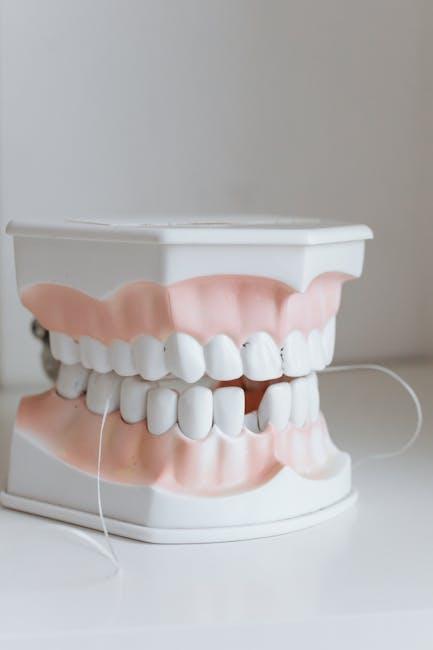
Fluoride Ban Could Create Cavities For 1 Of Every 3 U.S. Kids – U.S. News & World Report
Recent discussions and legislative moves to ban fluoride in public water supplies have ignited concerns across the United States. Experts warn that such a ban could lead to a dramatic increase in cavities, especially among children. Shockingly, estimates suggest that without fluoride, roughly one in every three U.S. kids could develop cavities — a significant public health setback. This article delves into why fluoride is essential, the potential consequences of its removal, and practical dental health tips for parents and caregivers.
What Is Fluoride and Why Is It Important?
Fluoride is a naturally occurring mineral widely recognized for its role in preventing tooth decay. It strengthens enamel, making teeth more resistant to acid attacks from bacteria in the mouth. Over the years, fluoride has been added to toothpaste, mouth rinses, and public water supplies as a cost-effective measure to combat dental cavities.
Key Benefits of Fluoride
- Prevents tooth decay: Fluoride helps rebuild weakened tooth enamel and reverses early signs of cavities.
- Cost-effective public health measure: Community water fluoridation saves millions in dental treatment costs annually.
- Safe and effective: Approved by health organizations worldwide, fluoride use has been repeatedly proven safe at recommended levels.
- Accessible for all: Fluoridated water reaches diverse populations, improving overall dental health equity.
Fluoride Ban: Potential Impact on U.S. Children’s Dental Health
Eliminating fluoride from community water supplies risks reversing decades of progress in oral health. According to the Centers for Disease Control and Prevention (CDC), fluoridated water reduces cavities in children by approximately 25% in five years. Removal would likely lead to a significant increase in tooth decay rates.
Dental experts estimate the following impacts among U.S. children if fluoride bans proceed:
- Up to 33% increase in cavity development.
- Higher dental treatment costs for families and healthcare systems.
- Greater oral health disparities, particularly affecting low-income communities.
| Impact | Before Ban | After Fluoride Ban |
|---|---|---|
| Children with Cavities | 2 in 5 | 3 in 5 |
| Annual Dental Costs per Child | $100 | $160 |
| Oral Health Equity | Improving | Worsening |
Understanding the Controversy Behind Fluoride Bans
While some groups advocate fluoride bans citing concerns about overexposure and potential health risks, health authorities maintain that fluoride’s benefits at recommended levels far outweigh any risks. Regulatory bodies like the FDA and World Health Organization (WHO) support fluoridation in water as a safe and effective public health measure.
Nonetheless, public debate continues, often fueled by misinformation. It is crucial for families and policymakers to rely on scientific evidence:
- Fluoride toxicity occurs only at very high doses, much higher than what is present in fluoridated water.
- Studies link fluoride levels in regulated water to improved oral health with minimal side effects.
- Reversing fluoridation could disproportionately impact vulnerable populations lacking access to regular dental care.
Practical Tips to Protect Children’s Teeth if Fluoride is Reduced
In communities where fluoride use is restricted or banned, parents and caregivers can take proactive steps to protect children’s dental health:
- Ensure proper brushing: Children should brush teeth twice a day with fluoride toothpaste, using a pea-sized amount.
- Schedule regular dental visits: Early checkups can catch cavities before they worsen and allow dentists to apply preventive sealants.
- Limit sugary foods and drinks: Reducing sugar intake helps prevent acid attacks on tooth enamel.
- Use fluoride mouth rinses: When available, supervised fluoride mouth rinses can supplement protection at home.
- Promote healthy hydration: Drinking water—even non-fluoridated—helps wash away food particles and bacteria.
Additional Preventive Measures
Dental providers may recommend topical fluoride treatments or dental sealants to further guard against cavities in high-risk children.
Case Study: The Impact of Fluoride Removal in Communities
One notable example is a city that discontinued water fluoridation five years ago. Dental clinics observed a steep rise in cavity cases among children, necessitating more fillings and extractions. The community dental health budget increased by 40%, illustrating the economic and health burden linked to fluoride removal.
“Since fluoride was removed, our pediatric dental appointments for cavities have nearly doubled—it’s clear prevention is far preferred,” says Dr. Lisa Morales, a local pediatric dentist.
Conclusion: Fluoride is a Cornerstone of Children’s Oral Health
Fluoride plays a vital role in preventing dental cavities, particularly for children who are still developing strong enamel. A ban on fluoride in U.S. water supplies could create cavities in approximately one-third of American kids, reversing decades of progress in oral health.
While debate and concerns exist, it is important to base decisions on rigorous scientific evidence. Maintaining access to fluoride, alongside good oral hygiene and proper diet, offers the best defense against cavities and dental diseases.
If you live in an area impacted by fluoride bans, take extra precautions to protect your family’s smiles through regular dental care and healthy habits. Dental health is essential not only for comfort but for overall well-being and confidence.
Stay informed, brush regularly, and don’t underestimate the preventive power of fluoride in protecting your child’s smile.


